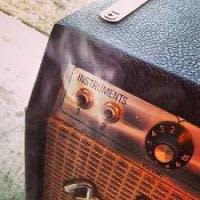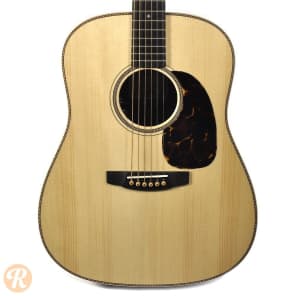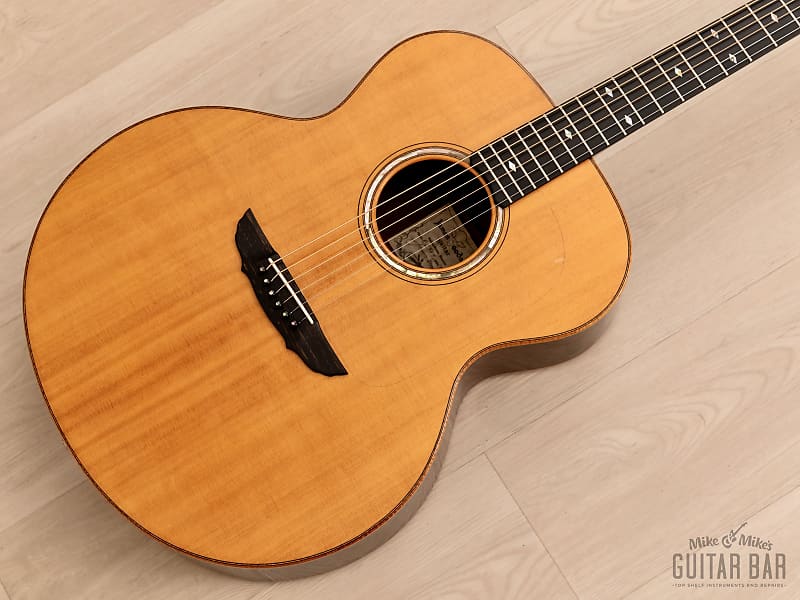

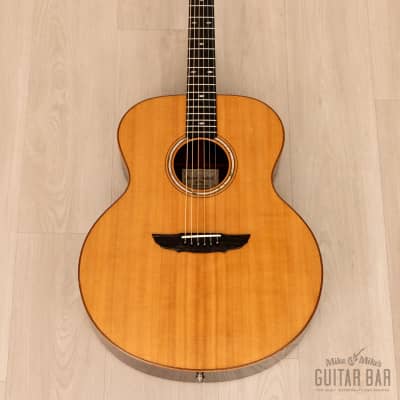
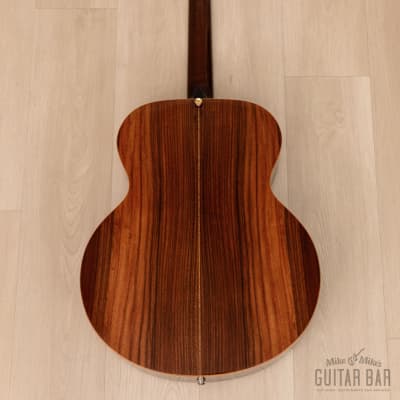
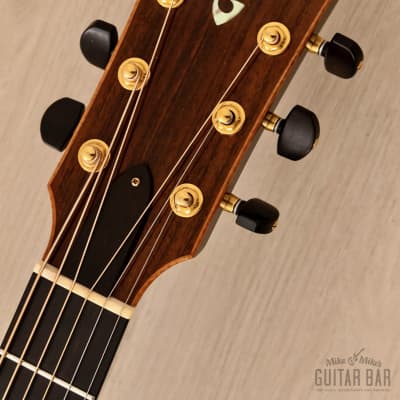
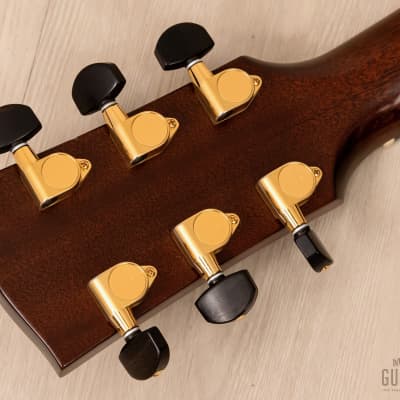
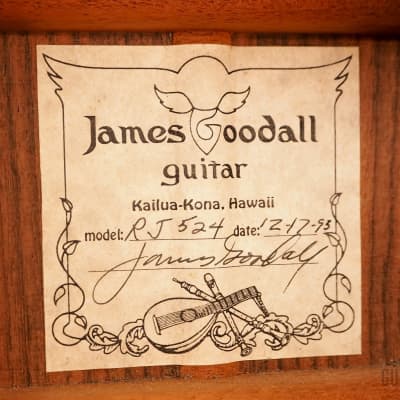
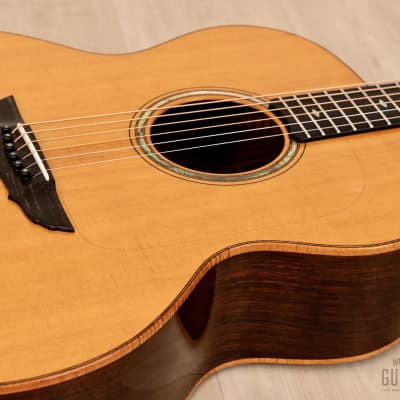
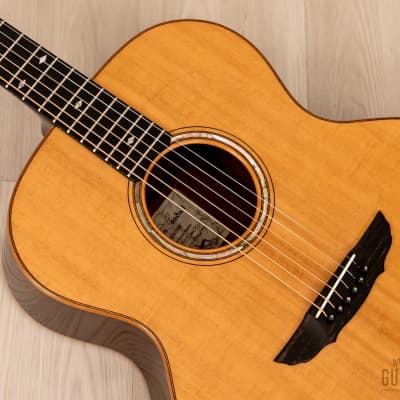
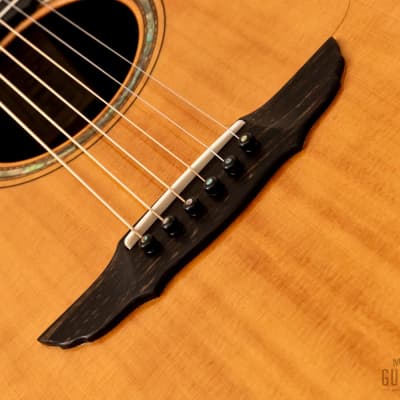
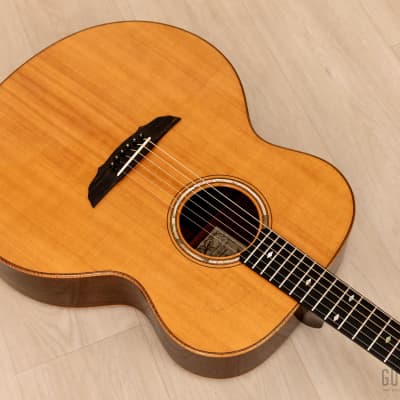
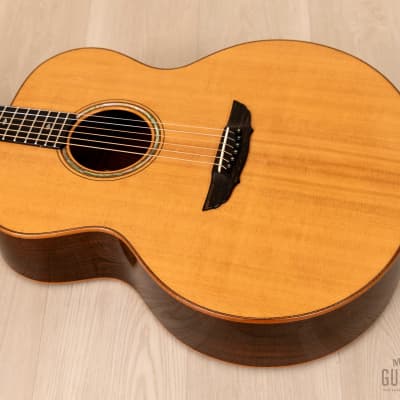
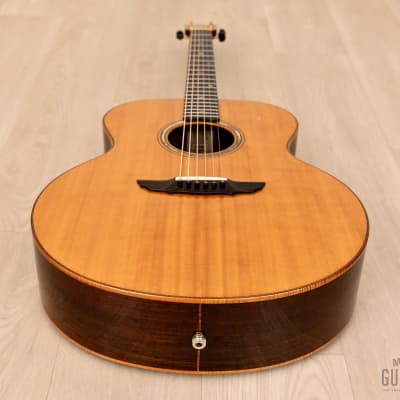
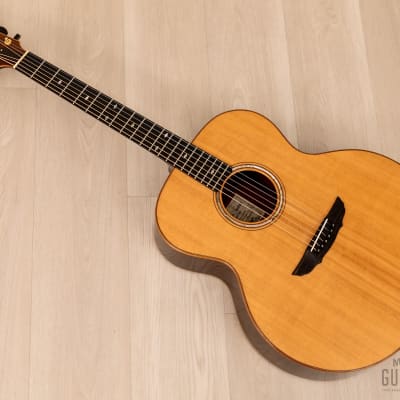
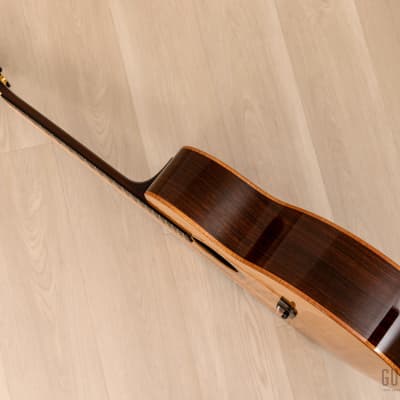
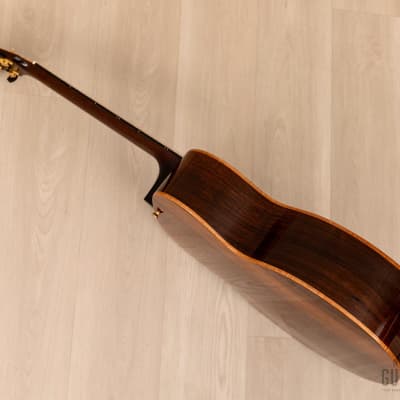
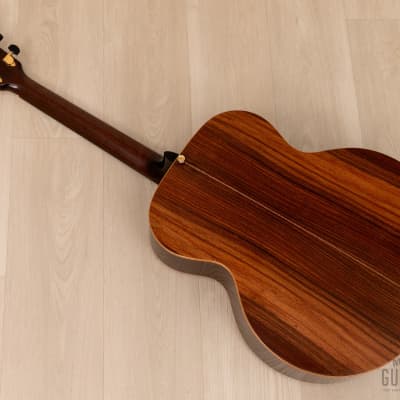
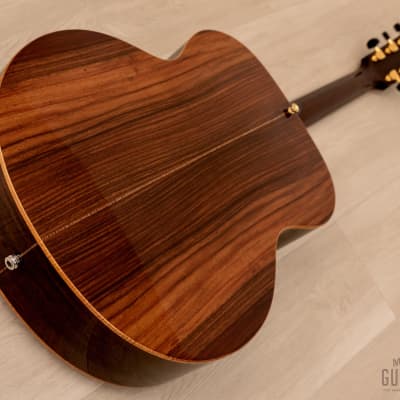
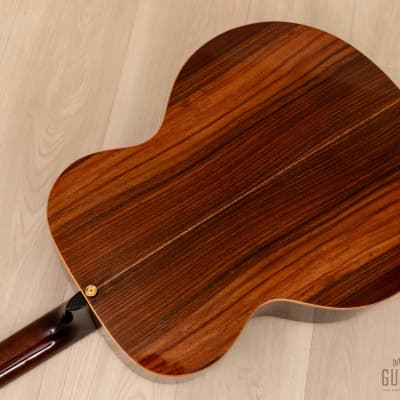
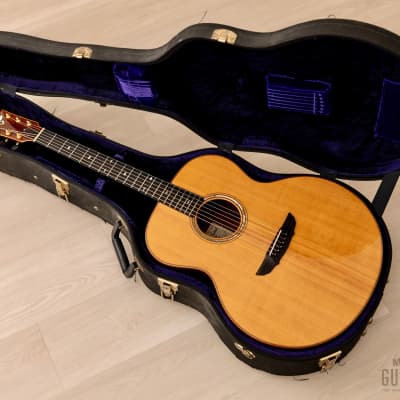
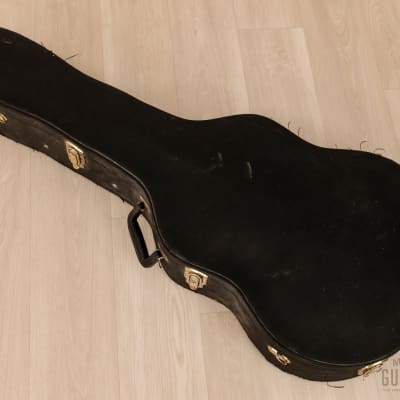
Up for sale, a 1993 Goodall RJ524 jumbo acoustic/electric in exceptional condition and in perfect working order, complete with the original hardshell case. Handcrafted in Kailua-Kona, Hawaii by the Goodall family, Goodall Guitars feature exquisite tonewoods and no-corners-cut craftsmanship. The first guitar founder James Goodall ever built was a jumbo, in 1972, and he has a particular affinity for the shape; this ‘90s iteration captures all the kick and boom inherent to the design, with the harmonic/overtone complexity and fullness on which Goodall built his reputation.
Tonewoods include an X-braced solid Sitka spruce top, East Indian rosewood sides, a bookmatched koa back, mahogany neck, and an ebony fingerboard. The lower bout measures just a hair over 17” in width, with a body depth of 4 1/2“. This Goodall delivers prodigious projection, with cavernous low end, and exquisite detail and string-to string clarity. The midrange is crisp and layered, with a complexity attributable to the rosewood/koa tonewood combination. The richness of the sound is balanced by a dry percussive cut and immediacy, and the trebles are sonorous and sparkling. The passive undersaddle pickup has independent elements for each string. This RJ524 weighs 4lbs 12oz, professionally setup here at Mike & Mike’s Guitar Bar with 12-54 bronze strings, easy-playing action, and accurate intonation.
The mahogany neck has a medium C-shaped profile carve with well-rounded shoulders, measuring .845” deep at the 1st fret and .865” at the 9th. The ebony fingerboard features abalone diamond inlay, and the medium fretwire exhibits light wear beneath the B and High E strings on the crowns of frets 1-5. This guitar plays cleanly up the 25 1/2“ scale with a straight neck and a responsive, optimally-adjusted truss rod, and the bone nut measures 1 13/16“ in width. The headstock sports a rosewood veneer, framed by flamed koa binding, and the gold Gotoh tuning machines have carved ebony buttons.
On the body, the ebony bridge sits flush with the top on all edges, and the tall drop-in saddle has plenty of room for future adjustment. The action at the 12th fret measures 7/64” on the bass side and 5/64” on the treble side. The soundhole is framed by an abalone rosette, with the original label visible in the body cavity and the tonewood spec sheet present on the neck heel block. The label is signed by James Goodall and dated to 12-17-1993. The clear pickguard has some faint scuffing along the strum path, only visible at certain angles.
Crack-free and very well-kept, cosmetic wear on this guitar is limited to a couple dings on the treble-side upper bout on top just beyond the edge of the transparent pickguard, and a few additional faint finish scratches and minor marks on the body as a whole. The smooth gloss on the neck profile is immaculate.
The original hardshell case with purple plush interior is included.
Tonewoods include an X-braced solid Sitka spruce top, East Indian rosewood sides, a bookmatched koa back, mahogany neck, and an ebony fingerboard. The lower bout measures just a hair over 17” in width, with a body depth of 4 1/2“. This Goodall delivers prodigious projection, with cavernous low end, and exquisite detail and string-to string clarity. The midrange is crisp and layered, with a complexity attributable to the rosewood/koa tonewood combination. The richness of the sound is balanced by a dry percussive cut and immediacy, and the trebles are sonorous and sparkling. The passive undersaddle pickup has independent elements for each string. This RJ524 weighs 4lbs 12oz, professionally setup here at Mike & Mike’s Guitar Bar with 12-54 bronze strings, easy-playing action, and accurate intonation.
The mahogany neck has a medium C-shaped profile carve with well-rounded shoulders, measuring .845” deep at the 1st fret and .865” at the 9th. The ebony fingerboard features abalone diamond inlay, and the medium fretwire exhibits light wear beneath the B and High E strings on the crowns of frets 1-5. This guitar plays cleanly up the 25 1/2“ scale with a straight neck and a responsive, optimally-adjusted truss rod, and the bone nut measures 1 13/16“ in width. The headstock sports a rosewood veneer, framed by flamed koa binding, and the gold Gotoh tuning machines have carved ebony buttons.
On the body, the ebony bridge sits flush with the top on all edges, and the tall drop-in saddle has plenty of room for future adjustment. The action at the 12th fret measures 7/64” on the bass side and 5/64” on the treble side. The soundhole is framed by an abalone rosette, with the original label visible in the body cavity and the tonewood spec sheet present on the neck heel block. The label is signed by James Goodall and dated to 12-17-1993. The clear pickguard has some faint scuffing along the strum path, only visible at certain angles.
Crack-free and very well-kept, cosmetic wear on this guitar is limited to a couple dings on the treble-side upper bout on top just beyond the edge of the transparent pickguard, and a few additional faint finish scratches and minor marks on the body as a whole. The smooth gloss on the neck profile is immaculate.
The original hardshell case with purple plush interior is included.
Reverb Buyer Protection
Reverb has your back if your item is lost, damaged, or doesn't match its description. Simply report any issues within 7 days and we'll help you get a full refund.Learn more about Reverb Buyer Protection.
| Listed | 7 months ago |
| Condition | Excellent (Used) Excellent items are almost entirely free from blemishes and other visual defects and have been played or used with the utmost care.Learn more |
| Brand | |
| Model |
|
| Finish |
|
| Categories | |
| Year |
|
| Pickup |
|
| String Type |
|
| Right / Left Handed |
|
| Number of Strings |
|
| Neck Material |
|
| Back Material |
|
| Sides Material |
|
| Top Material |
|
| Body Shape |
|
| Fretboard Material |
|
| Color Family |
|
| Active Preamp |
|
| Number of Frets |
|
